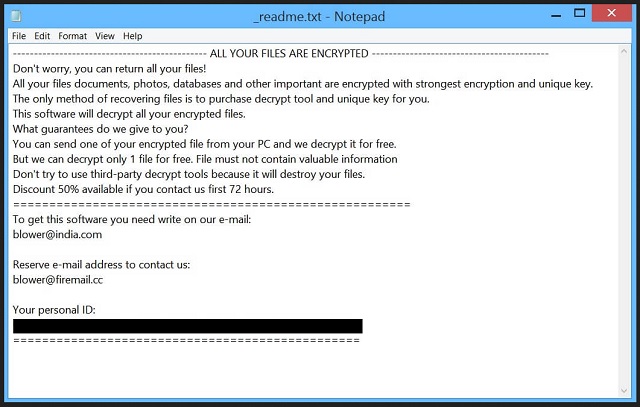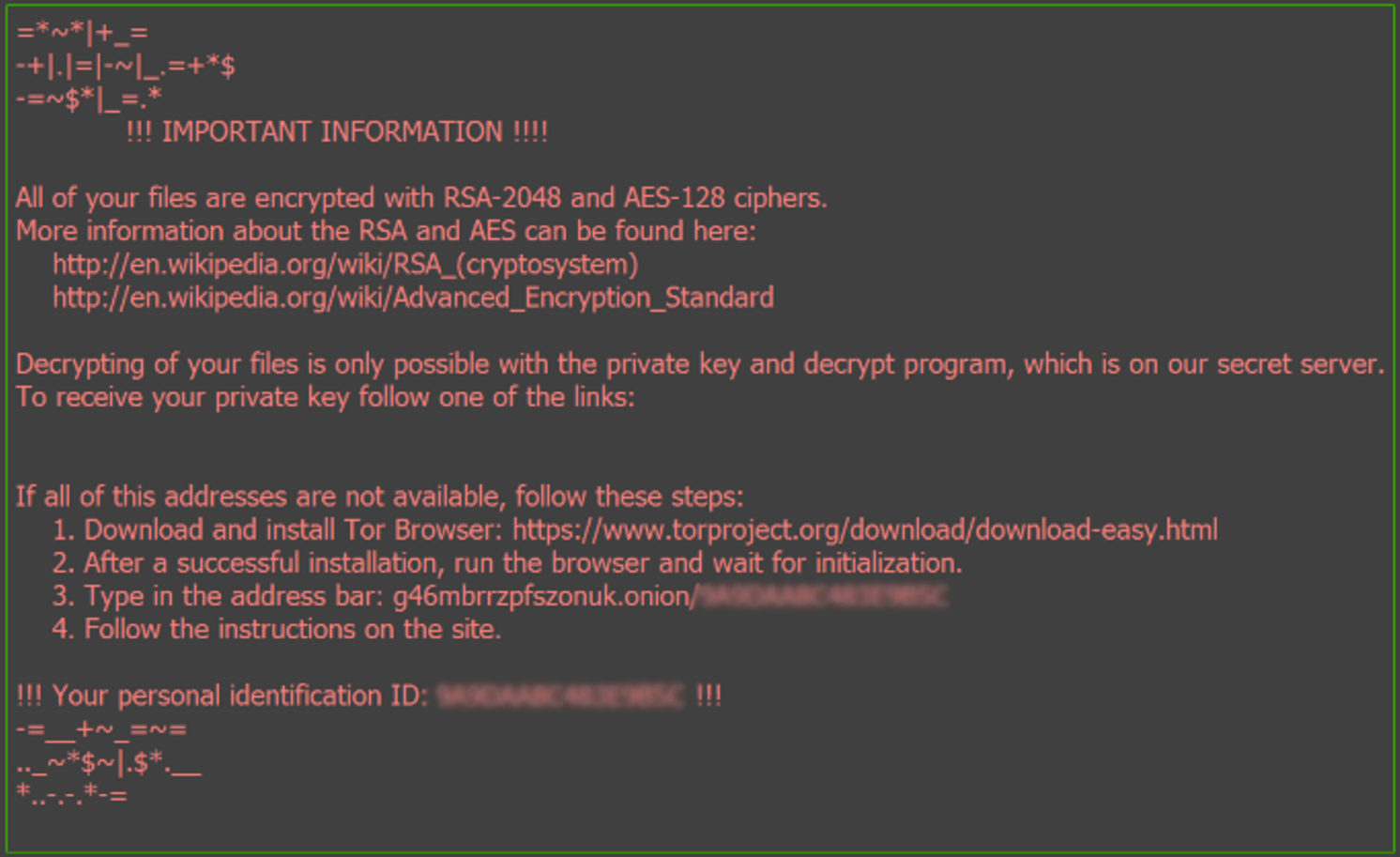SPECIAL OFFER
This article will help you to remove the.Doc File Virus entirely. Follow the ransomware removal instructions provided at the end. The.Doc File Virus is the name of a ransomware which is a variant of the GlobeImposter virus. Before a file is encrypted, the.Blower ransomware virus makes a copy of this file, encrypts it, and then deletes the original file. This can allow you to recover your photos, documents and music using file restore apps like PhotoRec. Download PhotoRec on your computer by clicking on the following link. A Script Virus usually camouflages itself through adding an additional suffix (i.e., png.vbs). Since the system does not show the latter suffix, users sometimes mistake the file for a normal picture file and don't delete it. This allows the Script Virus to get past security and create a mess in the computer. Click on Windows Start Control Panel located on the right pane (if you are Windows XP user, click on Add/Remove Programs). In Control Panel, select Programs Uninstall a program. Pick the unwanted application by clicking on it once. At the top, click Uninstall/Change.
Remove File Virus Doc.blower Free
Important for [email protected] victims!Files, encrypted by [email protected] could not be the only harm done to your computer. [email protected] may still be active on your machine and may spread to other computers on your network. To detect if you are still at risk and eliminate the threat, we recommend downloading SpyHunter.Further information on SpyHunter and uninstall guide. Before proceeding, please see SpyHunter’s EULA and Threat Assessment Criteria. The Privacy Policy of SpyHunter can be found on the following link. Bear in mind that SpyHunter scanner is completely free. If the software detects a virus, you can also remove it with a delayed removal or by purchasing SpyHunter’s full version. Also, keep in mind that SpyHunter cannot restore your files and is simply an advanced malware removal software.
This article is made to explain what is the [email protected] ransomware and how you can remove it successfully from your PC.
A ransomware, using the [email protected] e-mail as a file extension was recently discovered by security researchers. The ransomware is from the cryptovirus types of threats. This means that the [email protected] virus aims to encrypt the files on your computer and then ask you to contact the cyber-criminals on the e-mail [email protected] in order to negotiate how you can gain access back to your personal files. To do this, the virus may start to perform multiple different activites, which lead to your files being no longer openable. [email protected] ransomware should not be underestimated and if you see it on your computer, it is strongly recommended that syou read this article thoroughly.

| Threat Name | [email protected] |
| Category | Ransomware/Cryptovirus. |
| Main Activity | Infects the computer after which encrypts important documents and holds them hostage until a ransom is paid. |
| Signs of Presence | Files are encrypted with and users are extorted to pay ransom to get the data to work again. |
| Spread | Via malicious e-mail spam and set of infection tools. |
| Detection+Removal | |
| File Recovery | Download Data Recovery Software, to see how many files encrypted by [email protected] ransomware you will be able to recover. |
Which Files May Get Affected by [email protected] Ransomware?
[email protected] Ransomware serves as a typical file-encoding Trojan. As soon as it gets access to your machine, this cryptomalware will perform a quick scan to find the paths to all of your personal files. The targeted data includes all MS Office documents, your precious photos and videos, your databases, the program files, etc. Only a few files such as the ones related to the core Windows processes may be spared. Once the operation ends, you will notice a threatening lockdown message on your desktop and the default file extension will become ‘.dll’. The cyber criminals give the victims only several days pay the ransom of Bitcoins, or else they threaten to delete forever the decryption key. The purpose of this frightening message is to shock the person and make him act irrationally. The victims often feel as the only solution to the issue is to pay the money. In reality, all specialists unanimously recommend not to follow the instructions of the hackers for several different reasons.How to Protect Yourself from [email protected] Ransomware?
This ransomware may cause huge and often irreversible damage to the affected machines. Fortunately, you can prevent the infection as long as you are vigilant during your online sessions. This Trojan isn’t known to use some unique methods to infiltrate the defences of your computer. The most probable cause for [email protected] Ransomware to enter is via spam emails. You may receive a message with a shocking content, encouraging you to either click on a malicious link or download a compromised file. The hackers have a whole arsenal of tools to manipulate you into doing so. For example, they may claim to represent an international bank or some popular shipping company. If they address you without mentioning your name, the email is probably a scam and you should ignore it. Unfortunately, if you simply click or download the infected file, your action will most likely be enough to activate the harmful codes of [email protected] Ransomware. In this case, only a credible security solution may be able to prevent the forthcoming damage.
The main reasons not to pay the ransom are two. First, you may not receive the promised unlocking key even after doing exactly as the hackers demand. They often scam the victims because the Bitcoin platform doesn’t allow refunds and the people have no way to get their money back. The second reason not to finance cyber criminals is that your money will only motivate them to create more aggressive ransomware like [email protected] On the other hand, if their attacks are in vain, they may stop spamming the web with such malicious Trojans. These parasites require quite some efforts to be created professionally and spread efficiently.
Once you decide not to pay the ransom, there are several other ways that may help you decrypt your personal files. You should begin the attempts by removing all traces of the malware. If you fail to delete [email protected] Ransomware properly, it may decrypt your files once again in the future or spread to other connected devices. The manual removal is not the recommended solution since it requires expert-level knowledge in computers. The most reliable tactic is to use dedicated security software that has added [email protected] Ransomware to its database. Once the scan finishes, you should try some of the programs for restoration of files or the integrated System Restore feature. If you are lucky enough to have a spare copy of your files on some external device, you can import them back to your computer safely.
Booting in Safe Mode

For Windows:
1) Hold Windows Key and R
2) A run Window will appear, in it type “msconfig” and hit Enter
3) After the Window appears go to the Boot tab and select Safe Boot
Cut out [email protected] in Task Manager
1) Press CTRL+ESC+SHIFT at the same time.
2) Locate the “Processes” tab.
3) Locate the malicious process of [email protected], and end it’s task by right-clicking on it and clicking on “End Process”

Eliminate [email protected]‘s Malicious Registries

For most Windows variants:
1) Hold Windows Button and R.
2) In the “Run” box type “Regedit” and hit “Enter”.
3) Hold CTRL+F keys and type [email protected] or the file name of the malicious executable of the virus which is usually located in %AppData%, %Temp%, %Local%, %Roaming% or %SystemDrive%.
4) After having located malicious registry objects, some of which are usually in the Run and RunOnce subkeys delete them ermanently and restart your computer. Here is how to find and delete keys for different versions.
For Windows 7: Open the Start Menu and in the search type and type regedit –> Open it. –> Hold CTRL + F buttons –> Type [email protected] Virus in the search field.
Win 8/10 users: Start Button –> Choose Run –> type regedit –> Hit Enter -> Press CTRL + F buttons. Type [email protected] in the search field.
Remove File Virus Doc.blower Mac
Automatic Removal of [email protected]
Step 1:Click on the button to download SpyHunter’s installer.
It is advisable to run a scan before committing to purchase the full version. You should make sure that the malware is detected by SpyHunter first.
Step 2: Guide yourself by the download instructions provided for each browser.
Step 3: After you have installed SpyHunter, wait for the program to update.
Step4: If the program does not start to scan automatically, click on the “Scan Computer Now” button.
Step5: After SpyHunter has completed with your system`s scan, click on the “Next” button to clear it.
Step6: Once your computer is clean, it is advisable to restart it.
Recover files encrypted by the [email protected] Ransomware.

Email Worm Virus
Method 1:Using Shadow Explorer. In case you have enabled File history on your Windows Machine one thing you can do is to use Shadow Explorer to get your files back. Unfortunately some ransomware viruses may delete those shadow volume copies with an administrative command to prevent you from doing just that.
Method 2: If you try to decrypt your files using third-party decryption tools. There are many antivirus providers who have decrypted multiple ransomware viruses the last couple of years and posted decryptors for them. Chances are if your ransomware virus uses the same encryption code used by a decryptable virus, you may get the files back. However, this is also not a guarantee, so you might want to try this method with copies of the original encrypted files, because if a third-party program tampers with their encrypted structure, they may be damaged permanently. Here are the vendors to look for:
- Kaspersky.
- Emsisoft.
- TrendMicro.
Method 3: Using Data Recovery tools. This method is suggested by multiple experts in the field. It can be used to scan your hard drive’s sectors and hence scramble the encrypted files anew as if they were deleted. Most ransomware viruses usually delete a file and create an encrypted copy to prevent such programs for restoring the files, but not all are this sophisticated. So you may have a chance of restoring some of your files with this method. Here are several data recovery programs which you can try and restore at least some of your files:

Comments are closed.